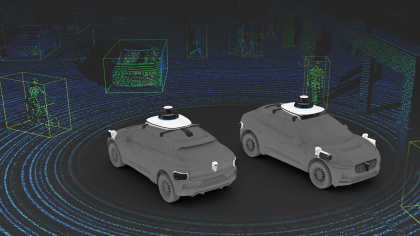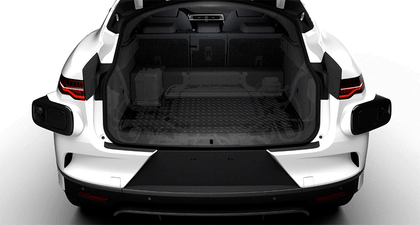March 26, 2020
Designing the 5th-generation Waymo Driver


Designing a driver for autonomous vehicles is one of the things we do best here at Waymo, but few people are familiar with what that entails and how it differs from designing the car itself. Whereas a traditional car is one platform usually designed for one purpose, we’ve designed our recently unveiled fifth-generation Waymo Driver to apply to multiple vehicle platforms and power a variety of different use cases, from moving people with Waymo One to transporting goods with Waymo Via.
Working in close coordination with our engineering team, we use design to distinguish our Driver from the vehicle platform and support its capabilities across these different scenarios. In addition to aesthetic benefits, smart design fuels technical innovation, enables us to scale, and allows us to add a human element to our product.
Let’s take a closer look at the core design considerations for our fifth-generation Waymo Driver.
Optimize for performance and safety
Eye-popping colors, sleek form, and pleasing aesthetics typically define design. Of course we consider these factors, but we also design our hardware to augment our sensors’ performance. Aligned with our mission to improve road safety, we prioritize the form, placement, and positioning of each sensor, while also developing materials and finishes for the best performance.
A fully self-driving vehicle doesn’t look like a traditional car, and we think that’s a good thing. While to some, our sensors appear too obvious on the vehicles, they’re actually right where they need to be to maximize capability and safety. For example, our fifth-generation lidar, cameras, and radar all have different field of view requirements, so we need to carefully curate the placement of the hardware and housing design to ensure the modules aren’t blocking one another.

We’ve also optimized our design for all-weather performance. We built our latest sensor suite with a variety of challenging weather conditions in mind, so we’ve incorporated weatherproof materials and mechanisms to maintain thermal stability as part of the design. We’ve also included innovative cleaning tools, like wipers and nozzles, to ensure our Driver can always see through any condition, from heavy rain to a little bird poop.
Increase flexibility and scalability
From generation to generation, our self-driving technology is always evolving. As designers, we need to ensure our design can flex alongside any potential evolution of our sensors. To do this on our latest version, we’ve designed hardware that can be used on several locations on the vehicle. We’ve also used simple and pure forms to integrate our sensors harmoniously across unique vehicle platforms.
Embrace Waymo’s design and branding
When a Waymo Driver cruises by, we want to make sure people can instantly identify it. To do this, we’ve established our sensors as a separate design element from the vehicle platform, designed them with the Waymo look and feel, and applied Waymo’s design language.

With our fifth-generation Driver, we’ve shown Waymo’s branding through intricate details, such as the form of the design, the application of logos and wordmarks, or just simple accent colors. This gives us a consistent look and feel across vehicle platforms and products and reinforces our identity as a technology company.
Enable platform adaptation
We also need to ensure our design works for multiple vehicles, whether it’s a minivan, SUV, or class-8 truck, and that our Waymo Driver is easily recognizable on each of these platforms. To do this, we adapt our Driver to vehicles through a collaborative process with our OEM partners. Here’s what that looks like for our fifth-generation Driver and the Jaguar I-PACE:

Keep high tech human-centered
Our fifth-generation Waymo Driver requires a complex, tech-driven design approach that simultaneously needs to be simple, as it powers rides for people and our partners. Our designers always take a human-centered approach and consider how our design will make people feel from the moment the car pulls up to the second they exit the vehicle and continue on their way.
One example of how we’ve incorporated human-centered design is the vehicle identification on our fifth-generation Driver. We’ve added moving LEDs to our dome so that it can act as a mechanism for riders to identify the vehicle day and night and know which vehicle is theirs when there may be more than one Waymo car waiting.

Another way we’ve made our Driver human-centered is how we’ve packaged our compute, which synthesizes all of the information our sensors collect onboard the vehicle. Historically, our compute, has taken up the whole trunk space, but in our latest platform, we wanted to make sure our riders would have enough room for luggage, groceries, golf clubs, a folding wheelchair, or whatever else they might be carrying with them. To do this, we reduced the volume of our (even more!) powerful fifth-generation compute under the trunk of the I-PACE, opening it up completely for riders to use.

Freeing up trunk space not only helps out our riders but also showcases the radical collaboration between our engineering and design teams.
Interested in hearing more about designing our fifth-generation Waymo Driver? Check out this presentation that dives into our design foundations and the evolution from our first-generation Waymo Driver to the fifth.

